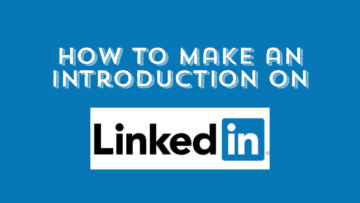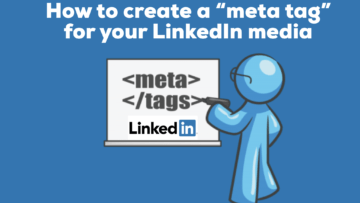Everyone's job search journey is different, so individuals should use techniques that work for them!
Are you a grad or grownup looking for job search strategies? Job seekers need to have job search strategies, tactics, and career management resources to organize their job search, whether beginning their first career as a recent grad, unemployed, or changing jobs. Career management is essential for planning and preparing for job search strategies.
Everyone’s job search is different, so no one size fits all. You are unique so your job search strategies will be individualized. to you!
APPLICANT TRACKING SYSTEM (ATS) – Although bots do not hire humans (but humans hire humans), it is still beneficial to understand the ATS and tailor every online resume submission to match keywords and key phrases in the job description. Resume formatting is also essential, and Arial 12-point font is mentioned in many articles. Don’t use highly formatted resumes for the ATS.
CAREER ASSESSMENT – If you don’t know where you are going, any road will get you there (Lewis Carroll). Career Assessments can provide individuals with occupations that best fit skills and interests, best work environments, passions, strengths and weaknesses, talents, personal goals, and more.
DRESS FOR SUCCESS – Dress for the job you want and not the one you have. Make sure your LinkedIn profile photo reflects the impression you want others to have when they see you in your profile.
ELEVATOR PITCH – You will need a different elevator pitch for different audiences, so perfect your elevator pitch. Consider using a memory dart or vivid image and make it as short as possible, so it’s memorable.
EMPLOYEE REFERRAL BONUSES – “One-third of new employees quit within the first six months following onboarding” (Jobvite, 2016), so employers may offer employee referral bonuses. Employee referral bonuses may exist because of the cheaper hiring costs, the job gets filled faster, and there is typically less turnover, higher retention rates, and increased productivity.
GOOGLE ALERTS – Set Google Alerts for job title, location, and other keywords
HIDDEN JOB MARKET – The hidden jobs market refers to jobs that have not yet been posted online, are unadvertised, or unpublished. Employers may want to replace someone not performing well, or they may not want their stockholders or competitors to know that something big is coming, and they may not advertise a job opening. There may be a retained search, or the job might be on social media. Even if a job is published, it might not be an actual posting. Even though they have pre-selected a candidate, the company may be going through the motions. The best way to tap into the hidden job market is to network, network, network!
INFORMATIONAL INTERVIEWS – Reach out to others and request an informational interview to ask them about the company’s culture, how they climbed the ladder in their company, or how they prepared for or changed their career. Send an agenda in advance with questions you would like to ask, and be respectful of the time limit you set (15 to 20 minutes) unless they care to go longer.
INTERVIEW PREPARATION – Practice! Practice! Practice! No one got the first violin chair or made it to the NFL without practice. The same goes for prepping for an interview. There are numerous interview resources for articles, practice platforms, and live free workshops.
JOB CLUBS – Engage in networking with other job seekers or people managing their careers so you can learn from career education subject matter experts and engage in networking at the same time. The Great Careers Network was listed as the #1 business networking organization in the Philadelphia Business Journal in 2020 and 2021!
KEYWORDS – Incorporate keywords in your resume and LinkedIn profile, especially in the headline, About, and skills section. Embellish your job titles to 100 characters and add keywords to your projects and publications. There are several articles you can read about keywords.
LIFELONG LEARNER – ABC – Always Be Curious! Through workshops, certifications, university courses, social audio rooms, or online resources, keep learning. In fact, never stop learning!
LINKEDIN PROFILE – Optimize your LinkedIn profile with keywords. You want to use words that have big hits so you can be found and also nichey words for your area of expertise. Ensure you have over 500 connections so the algorithm works in your favor. Sign up for numerous monthly online LinkedIn workshops and set up job alerts.
MENTOR – Mentoring and reverse mentoring can work nicely to enhance careers to build skillsets, contacts, and more.
NETWORKING PLAN – Make networking a habit! You need to keep networking even after you land a job. Track your notes in an Excel spreadsheet, Google sheet, or a CRM system. This tracking system will come in handy since many people constantly change jobs throughout their careers. A job search tracker is part of the career toolbox of a dozen items that members of the Great Careers Network receive, whether they are a student, professional, or mid to senior-level executive.
NEWSLETTER – Create a newsletter on your LinkedIn profile or your company page. You can also create an email newsletter on MailChimp, Constant Contact, AWeber, MadMimi, and others, but make sure you do not violate the CAN-SPAM ACT. As a job seeker, you can include sections such as the following: Welcome Paragraph, About Me (elevator pitch), Networking Philosophy, How You Can Help Me (the ask of connection requests at target companies), How I Can Help You (the offer), and Final Thoughts like quotes, a good book, or something interesting to share.
ONE PAGER FOR NETWORKING – Use a one-pager (marketing handout, handbill, networking page, or whatever you might want to call it) when networking with other job seekers. It is a one-page condensed version of your resume without all of the accomplishments, and it has your target companies listed.
PORTFOLIO PRESENTATION – Develop a career portfolio and use a platform that suits your budget. Several options are free to less expensive, and the WinTheView career portfolio is sure to impress. There are suggestions in these articles on sections you could include in your portfolio.
RECRUITERS – Build relationships with recruiters, and they may have access to jobs that are only open to them. They may also have part-time or contract work that can help you get to a paycheck quicker, especially if you need a bridge job. Every third Thursday of the month, we have a Recruiter on Call with Jobs meeting! Although the guest recruiter might have local or hybrid jobs, they must also have remote jobs available to share.
RESUME – If you are applying online, do not use a highly formatted resume template as the bot may not be able to read it. Customize each resume from your base resume, so you match with keywords and key phrases. Ensure you do not use an objective or references available upon request, or you will be dating yourself. AOL emails will also date you, so get a Gmail. Don’t state over 20+ years of experience when you can say extensive experience; not to date yourself if you are a seasoned worker.
SUBJECT MATTER EXPERT If you have expertise you can share, write blogs, articles, or newsletters or give presentations to demonstrate your knowledge. Riches in niches!
TARGET COMPANY LIST – Everyone should develop a target company list of where they would like to work because of location, prestige, mission, corporate social responsibility, or whatever reason suits them. One can look up Standard Industry Classification (SIC) or North American Industry Classification System (NAICS) numbers by using Reference Solutions (Data Axle), and this database is typically available at your local library.
VALUE PROPOSITION LETTER – If you are a seasoned worker, you can be proactive in your job search instead of reactive to job boards by sending out a value proposition letter. It is a brief statement (100-150) words that succinctly explains the candidate’s unique qualities, skills, and accomplishments and is sent without a resume. This technique is not meant for recent grads.
VOLUNTEER – April is volunteer month. Did you read the article, How to Use Social Media & LinkedIn to Reach Nonprofit Volunteers? Seek out a volunteer or Board position with a nonprofit with a mission that matters to you. Read the book The Go-Giver if you need some inspiration.
NEXT STEPS
- Subscribe to my newsletter on LinkedIn for bright ideas to manage your career.
- Join as a member at https://httpsgreatcare.wpenginepowered.com/membership of the #1 business networking association on the Philadelphia Business Journal’s Book of Lists two years in a row! Please note that we changed our website URL recently.
- Register on the events page for these upcoming online events noted below.
- If you need a resume or LinkedIn profile to get you to your next step, book a call to chat!
AUTHOR BIO
Lynne M. Williams is the Executive Director of the Great Careers Network, a volunteer-run 501(c)3 nonprofit organization that provides career education and networking connections for 1) job seekers in career transition, including veterans, and 2) employed and self-employed for career management. She is also the President of ChemPharma.net and runs a Clubhouse session every Friday at 11 AM ET in the Thought Leadership Branding Club.
Aside from writing keyword-focused content for ATS resumes and LinkedIn profiles, Lynne is currently writing her doctoral dissertation on LinkedIn for Job Seekers. She is a contributing author on “Applying to Positions” in Find Your Fit: A Practical Guide to Landing the Job You Love along with the late Dick Bolles, the author of What Color is Your Parachute?, and is also a speaker on career topics.
This article is also published on: vista.today, montco.today, delco.today, bucksco.today, and in the author’s LinkedIn newsletter. A list of articles can also be found in a Google doc.




